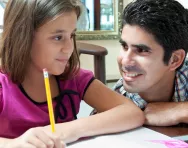Important update from TheSchoolRun
For the past 13 years, TheSchoolRun has been run by a small team of mums working from home, dedicated to providing quality educational resources to primary school parents. Unfortunately, rising supplier costs and falling revenue have made it impossible for us to continue operating, and we’ve had to make the difficult decision to close. The good news: We’ve arranged for another educational provider to take over many of our resources. These will be hosted on a new portal, where the content will be updated and expanded to support your child’s learning.
What this means for subscribers:
- Your subscription is still active, and for now, you can keep using the website as normal — just log in with your usual details to access all our articles and resources*.
- In a few months, all resources will move to the new portal. You’ll continue to have access there until your subscription ends. We’ll send you full details nearer the time.
- As a thank you for your support, we’ll also be sending you 16 primary school eBooks (worth £108.84) to download and keep.
A few changes to be aware of:
- The Learning Journey weekly email has ended, but your child’s plan will still be updated on your dashboard each Monday. Just log in to see the recommended worksheets.
- The 11+ weekly emails have now ended. We sent you all the remaining emails in the series at the end of March — please check your inbox (and spam folder) if you haven’t seen them. You can also follow the full programme here: 11+ Learning Journey.
If you have any questions, please contact us at [email protected]. Thank you for being part of our journey it’s been a privilege to support your family’s learning.
*If you need to reset your password, it will still work as usual. Please check your spam folder if the reset email doesn’t appear in your inbox.
Home educating children of different ages

Any parent who’s ever tried to supervise two or more children doing homework at the same time knows that it can be a recipe for arguments and tension. So what happens if you’re home educating siblings? Can you plan a teaching programme that meets all of their needs and keeps everyone happy?


Free home education planning pack & resources
- Guidance, templates & advice
- Practical tips from experts and parents
- How to establish a routine and set goals
Choosing a home-educating approach
There are several different approaches to home educating children of different ages. These include:
Topic-led home education
This involves picking a theme to tie your learning together, and tailoring the individual tasks and activities to suit each child. For example, if you’re doing a project on transport, a younger child might learn about the history of transport and the Green Cross Code, while their older sibling finds out how to measure speed and distance. You can also integrate activities that involve both children: in this case, they could work together to build a hovercraft.
Be prepared to spend some time finding topics that will appeal to all of your children, and be creative about the learning activities you can get out of them. Dedicating a term to studying sport, for example, might appeal to your football-mad child, but not to the one who can’t tell Manchester United from Mansfield Town.
Pros: This approach motivates children by tapping into their interests, reinforces learning and encourages them to work as a team to support each other.
Cons: You’ll need to be organised. Consider having a clearly labelled filing cabinet or a set of drawers for each child with their own learning materials.
Curriculum-led home education
If you want to follow a similar approach to schools, consider looking at the National Curriculum for each age group and basing your teaching on what your child would be learning at school. It may look daunting at first, but you can break it down into manageable chunks to work through methodically. If you’ve got the funds, educational companies offer curriculum-based packs including workbooks and other materials.
Pros: It’s a structured approach, which can give you confidence, and children are learning age-appropriate skills and will be at the right level if they eventually return to school.
Cons: It could be restrictive and reduces the ability of the child to have autonomy over their own learning.
Child-led home education
'Home education is all about learning to learn, not necessarily what you learn,' says Dr Leslie Barson, founder of home education group The Otherwise Club. 'As a home educator, you’re not filling an empty vessel, but encouraging a learner to follow whatever they are interested in and giving them the resources to explore at their own level.' Keep a close eye and ear on what your child is interested in, make a note of it and follow it up in wide-ranging ways – if it’s Greece, you could learn about the country’s ancient history, draw a map of its geography, learn some basic language, organise a mini Olympics and bake some Greek treats.
Pros: Children are more likely to do well at work they enjoy, and taking an active role in their learning will set up good study habits.
Cons: You may end up covering lots of different themes or areas at once if your children have different interests, and it may not work if you are hoping to integrate your child back into school.
Age-led home education
Some home educators argue that age isn’t relevant when teaching your child at home. But others split their time between siblings, at least for part of the day. This way you’ll be able to focus on their different interests and needs and offer ideas and activities accordingly. You’ll to plan activities that the child who’s not working with you can do independently, such as working through a reading comprehension while you’re doing maths with their sibling.
Pros: Schools work on this age-led approach, so it could be useful if you plan for your child to go back into the classroom eventually. It also enables you to give one-to-one attention to each child and focus on their learning needs.
Cons: It may not suit autonomous learners, or those who need lots of supervision to get their work done.
Time management
Whichever approach you choose, think carefully about how your children can get the most out of each day. This might mean working out a timetable or framework for each child, with the subjects you’d like to cover each day. Plan ahead and make sure you’ve got all the relevant materials prepared.
Workspace
While home education often creates extremely close bonds between siblings, not all brothers and sisters can study together. Consider how your children work best; do they end up arguing if they’re sitting together at the table? Would they benefit from some time away from each other, reading quietly in their bedrooms? Just as in a normal classroom, make sure you have enough materials and resources to go around; fights over whose turn it is to use the ruler can really disrupt your children’s learning.
Trouble-shooting
'One child needs more attention than the other'
If one of your children has special educational needs or just needs more supervision, consider staggering your learning day, for example, giving one child some free time whilst you concentrate on the other. Encourage your children to help each other; they will both have different strengths and will be able to teach the other in some way. Be honest with yourself about your capabilities, and take small steps to start with. It may sound daunting at first but other home educators will be willing to help – you won’t have to do it on your own.
'My son keeps distracting my daughter'
Set strong boundaries and encourage both children to take responsibility for their learning. Sit down together to decide an action plan or draw up an educational philosophy. It is your responsibility to home educate your child. This doesn’t mean being authoritative, but listening to them about how they want to learn and finding activities that will stimulate them both and appeal to their different learning styles.
'They don’t like doing the same type of work'
If a child is interested in a subject, they are more likely to work hard at it, so think creatively about covering the same type of work in different ways. If your younger is keen on castles and your older one loves maths, combine the two: devise multiplication problems using battlements and flags, work out the volume of the moat and so on.
'How can I find a meet-up group that suits both of my children?'
There are many types of home education group. Some have different activities according to approximate age ranges; others are topic-based and designed for you to pick and mix according to interest. Excursions are one-off events that could interest both children – and think about accessing groups online if they are too far to visit. Facebook is a good starting point for finding groups in your area and seeing what sort of people attend.
Some groups allow children to attend unsupervised, which can free you up to spend time with your other child. If you go to a group regularly, chances are another parent will be happy to supervise so that you and your other child have a chance to work on something else.
'My elder son is studying for his GCSEs; how can I keep my younger son engaged?'
Balancing algebra equations with questions about tens, hundreds and units can be tricky. While primary school-age siblings can often learn happily together, mixing secondary education is a real skill, but hopefully your elder child will have grasped how to learn independently. You could also have a different timetable for each, acoording to their needs: for example, you could devote your attention to your eldest in the evening, when your younger child is in bed.
If you’ve got the funds, it may be worth joining a private tutor group, buying GCSE packs from home education companies or even enrolling your child at a local college for some subjects.








